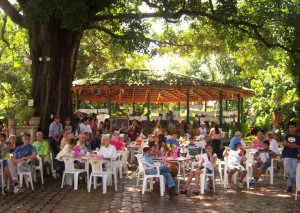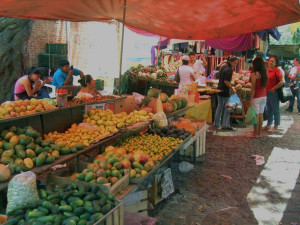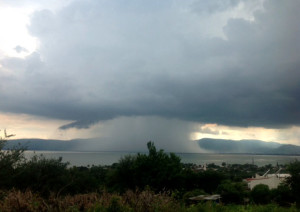When I interviewed baby boomers for my recent book, one of the couples sat me down with a list of “must haves” they had used as they researched areas in which to retire. They had looked at Arizona which they found to be too hot; Idaho was too cold and Florida was too expensive at the time they had done their research. While in Arizona, they met an 86-year-old man who sat down with them and said, “Let me tell you what I think is important for retirement.”
During the interview, they handed me a sheet of paper which documented his ten guidelines:
1. A place where you can live below your budget
One of the unknowns has always been, “How long will we live?” Will our current assets and retirement monies support us until then?
In creating a budget, we also need to know if we will want to travel during our retirement. Do we feel it’s important to have a car, pets, a maid and gardener? Do we plan to take in cultural events, and eat out frequently? What level of insurance and medical care do we want?
During my 18 years in Ajijic, I’ve written many articles on the cost of living and although there’s no one answer for everyone, I’ve spoken with singles who live very modestly on as little as $900 US per month and more extravagantly on $2500 a month. Couples have reported monthly budgets from $1200 to $4500. Many who live on Social Security alone find they can live here with dignity and self-respect. That is something most retirees cannot attain north of the border.
2. A place within 50 miles of an international airport
This is especially important if you plan on travelling frequently or have hopes that your family and friends will visit regularly. Here at Lake Chapala, the international airport is only 30 minutes away. It’s a small airport, considering that Guadalajara has over seven million people. It’s easy to get to, easy to park in and easy to navigate the airport. Taxis to the airport cost approximately $35 US.

3. A community with over 10,000 retirees so you can find at least seven people who share your interests.
At Lakeside, the largest U.S. and Canadian expat community in North America, there are over 100 organized groups that you can get involved with from theater to music to orchid growing to poker. When I arrived, there was no scrabble group, so I simply posted a notice on the Lake Chapala Society bulletin board and now there are groups at different levels which meet three times a week. The types of activities we have range from educational to cultural to social to volunteer work. Not only is there no reason to be bored here, but it’s advisable to refrain from overbooking your time when you first get here.
4. A community over 10 years old
This is important because, after ten years, the community should be well established so that most problems have been worked out. The Little Theatre in Ajijic is 50 years old and the Lake Chapala Society is nearly 60 years old. A number of non-profit organizations have been established here for decades.
5. A place rich in cultural diversity and history
Ajijic was founded by the Spaniards in 1531 and is one of the oldest villages in western Mexico. Foreigners discovered it in the 1930s and today the north shore of Lake Chapala is home to approximately 15,000 full and part-time Americans, Canadians and Europeans in addition to the approsximately 70,000 Mexicans. There’s a Canadian club, German speaking club, Irish club and a group from New England which meets monthly.
6. A place with weather you can live with
As discussed in the Q&A section on this site, the Lake Chapala region is considered the second best climate in the world with a year-round average temperature of 69°F (20.5°C) – not too hot and not too cold. Because of this, the area attracts thousands of snowbirds from the cold country in the winter and sunbirds from the hotter regions in the summertime.

7. Having access to fresh produce
Located close to Sinaloa, Mexico’s breadbasket, the fruits and vegetables are all freshly picked and brought to many of the local tianguis (outdoor markets).
The huge abastos in Guadalajara is a central wholesale distribution center for produce, meats and fish. In addition, Ajijic has an incredible organic market open each Tuesday.
8. Having access to the best medical care
Also discussed in the Q&A section, Chapala and Ajijic are blessed with a Red Cross clinic, several medical clinics with ambulances and the ability to stabilize patients in order to get them to the appropriate hospital in Guadalajara. Some of Guadalajara’s hospitals compare favorably to the best in the U.S. and Canada. Most specialist doctor’s speak English and, in fact, many U.S. doctors were trained at the Universidad Autónoma de Guadalajara.
9. A place which provides good local transportation
Many expats choose not to own a car. This is an easy choice since the public transportation (primarily busses and taxis) are convenient, frequent and inexpensive. For longer trips, Mexico has several bus lines which are considered luxurious and certainly one-up the Greyhound lines in the United States. Senior Mexicans and expats can get 50% discounts on travel within Mexico.

10. An area with a low probability of catastrophic events
The only “catastrophic” event I’ve witnessed in 18 years was a water spout in 2010 that damaged many homes and roads in San Juan Cosala. Being inland, we are immune to hurricanes, although we do sometimes get the tail end of wind and rain resulting from hurricanes on both coasts. We’ve had a few minor earthquakes with insignificant damage. Fires are rare because the buildings are constructed of brick and cement. Most homeowners do not even carry homeowner’s insurance.
After I discussed these 10 points with the couple I interviewed, it became very apparent that their choice of Ajijic to retire met with all the older gentlemen’s very wise advice. It’s a good checklist to keep in your pocket as you research retirement places, be they in Mexico, overseas or north of the border.